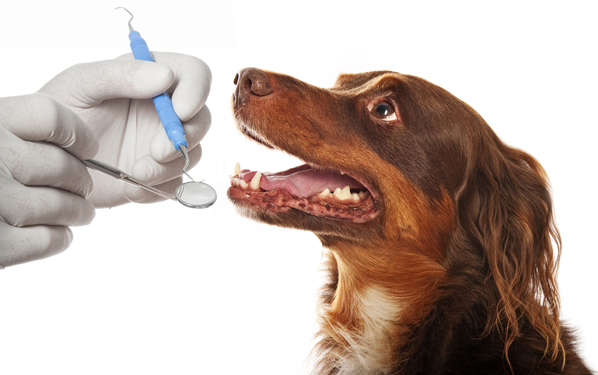
The doctor will assess your pet's need for further dental care during a comprehensive physical examination. Dental disease is one of the most common preventable problem in pets. Preanesthetic bloodwork is required for all pets over 6 years of age, and highly recommended for all pets. This bloodwork allows us to evaluate your pets internal organs and ability to withstand anesthesia.
We ask that all pets be fasted for 12 hours prior to anesthesia to minimize vomiting and aspiration pneumonia. Once you leave your pet in our care, we perform a physical examination to check your pet's heart and temperature. If everything appears normal, pre-anesthetic medications are individually calculated and tailored for each pet. This includes a sedative and a pain injection for all pets. Around 20 minutes after the pre-anesthetic medications are administered, an IV catheter is placed, and fluids are administered as anesthesia is induced. IV fluids greatly improve the safety of anesthesia, helping to maintain blood pressure, kidney function, and prevent post-operative dehydration. In addition, if there were a problem, the IV line allows for rapid treatment. All patients anesthetized for dentals at Brunswick Veterinary Hospital receive IV fluids.
As soon as anesthesia is induced, a breathing tube is placed and the patient is started on gas to maintain the anesthesia. Monitoring equipment, including pulse oximetry (oxygenation monitor), ECG (electrical tracing of the heart), and blood pressure are then placed on the patient, the eyes are lubricated to prevent damage, and your pet is placed on a heating pad and a fluid warmer is attached to the intravenous line to provide warmed fluids . Anesthetic monitoring by the technician is constant during the procedure.
After the teeth are thoroughly cleaned with an ultrasonic cleaner, rinsed, and polished, we examine every part of the patient's mouth and any abnormalities are noted on the dental chart. Dental radiographs may be needed at this time to further assess an area of concern. If necessary, extractions are performed at this time. We have a high speed dental drill which helps us to complete the extractions rapidly and with a better end result. The gums are sutured with absorbable sutures if indicated.
All patients are closely monitored and kept warm as they awake , with most patients standing up within a few minutes of completing the procedure. Body temperature is closely monitored after anesthesia to keep your pet recovering well. Pain management includes medications before, during, and after the procedure. Antibiotics are also administered if extractions are performed.
At discharge, all instructions are written out and fully explained. At any time before or after your pet's care you are welcome to call with any questions you might have.
Finally, we will advise you of when your pet should be checked again, and of any required follow-up. The most important part of the procedure now begins, as home care is critical in maintaining your pet's oral health. We have a variety of products to assist you in achieving a healthy pet. The best of course, is toothbrushing with CET Enzymatic toothpaste. If your pet is not cooperative, we also have an antiseptic rinse, antiseptic chews for dogs and cats and a water additive which kills bacteria in the mouth. We recommend daily dental care for optimum results.